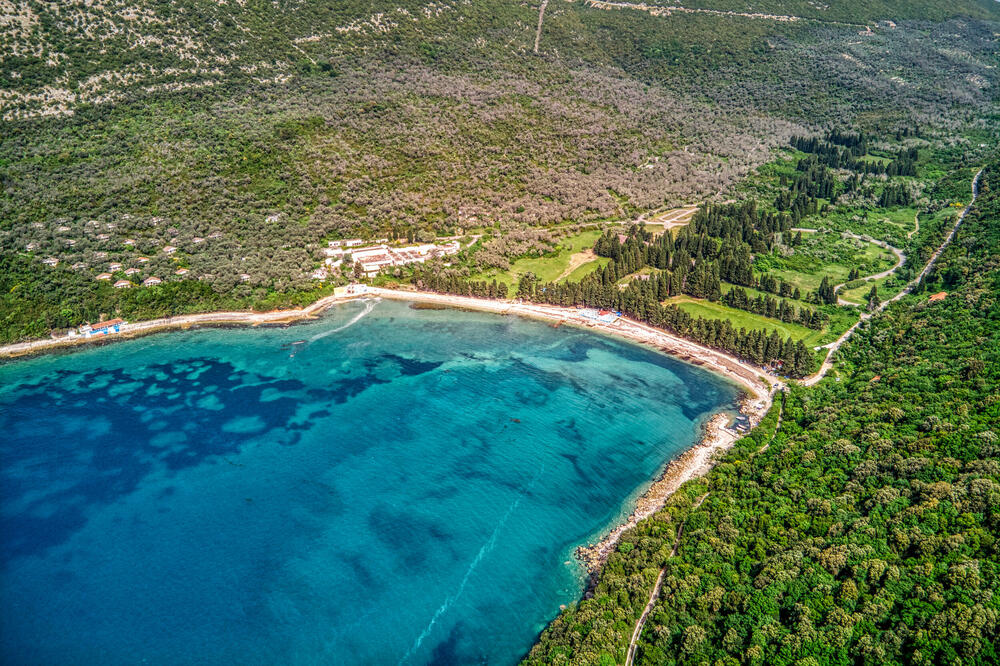In September, the construction of a complex of luxury villas and the hotel "Olive Village" will begin in the Ulcinj olive grove in Valdanos. The Spatial-Urban Plan (PUP) of Ulcinj prohibits construction in the Valdanosa olive grove, but the six cadastral plots where this complex is located belong to a small part of this unique area where construction is permitted - a location where oil tests were carried out in the eighties. Because of this, many olive trees were cut down in that place back then.
From the Secretariat for Urbanism and Construction of the Municipality of Ulcinj for Center for Investigative Journalism of Montenegro (CIN-CG) said that the plots belong to the zone of "rural settlements where construction is allowed", and that it is necessary to follow special technical guidelines.
The investor of the project is "Elite Homes doo", in which he owns 50 percent Valjon Buzuku, an architect from Ulcinj. Buzuku was a high-ranking official of the Municipality of Ulcinj on two occasions. From 2011 to 2014, he was the secretary for urban planning and spatial planning, and from 2017 to 2018, the chief city architect. During his first mandate, the Ulcinj PUP Draft was published, which was adopted in 2017, on the basis of which construction on these plots was allowed.
Buzuku told CIN-CG that his business has nothing to do with his previous functions, and that he bought the land "for big money" and that he is advocating for the preservation of olive groves where construction is prohibited almost everywhere, apart from his plots.
When asked by CIN-CG whether he thinks that a project like his will encourage other owners of Valdanos to build, Buzuku replies that the construction is legal, in contrast to the construction of numerous smaller structures that are illegally springing up in Valdanos. "It is wild construction and all these people are a job for the Urban and Construction Inspection. I build legally and according to world standards", said Buzuku.
Olive trees should not be cut
CIN-CG interlocutors believe that the projects located next to the Valdanos olive grove contribute to the already damaged authentic purpose and appearance of the olive grove.
"Valdanos Bay with its olive grove represents one of the most beautiful, original cultivated landscapes and cultural assets in Montenegro. It survived the millennia without any construction and was used exclusively for growing olives,'' he tells CIN-CG. Zenepa Lika, architect and executive director of the Ulcinj NGO MSJA, which has been fighting for the preservation of Valdanos for years.
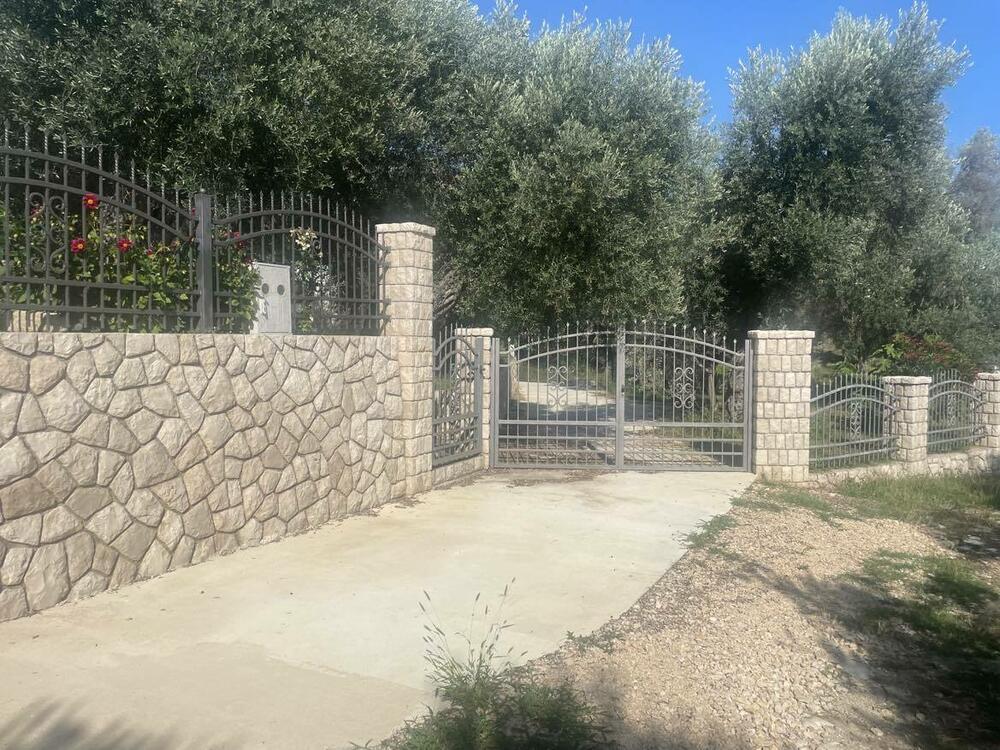
The construction that the PUP Ulcinj allows in the central part of Valdanos, where oil exploration was carried out, whets the appetites of the owners of olive groves where construction is prohibited, explains Lika. "All this encourages the conversion of the primary activity of olive growing and the devastation of this area."
CIN-CG visited the "Elite Homes" construction site, where there is a board with images of the future settlement. Completion of the works is scheduled for 2025. The construction of five villas, a hotel and a house with a reception is planned. There are already 5 villas of about 140 square meters for sale, at a price of 2.000 to 2.200 euros per square meter. "For a peaceful life in absolute harmony with nature," it says in English on the project board.
"Olive Village" cannot be considered an architecture suitable for this landscape, according to Lika. "The buildings and the hotel are too big for this area, they stick out and don't fit into the olive grove," says Lika.
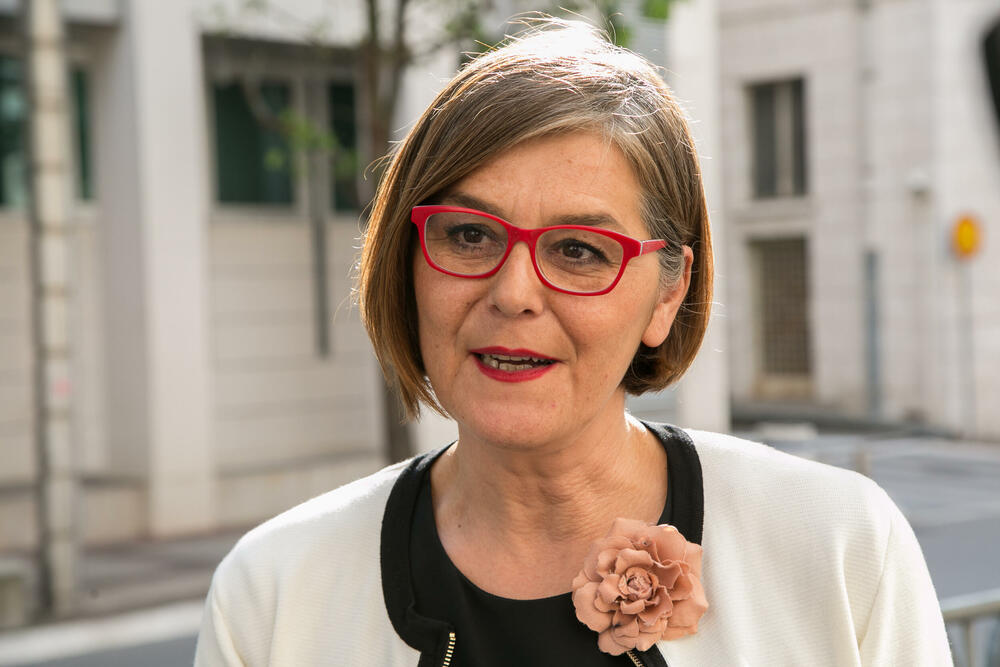
CIN-CG has located olive trees on the Geoportal on the plots intended for construction. The Municipality of Ulcinj says that according to the PUP, olive trees are not registered on those plots, because they do not belong to the protected zone of olive groves. According to the Law on Olive Growing of Montenegro, cutting and extracting olives in olive groves is prohibited. "I don't know how the trees should be treated in that case, it's a complicated issue," the secretary for urban planning and construction of the Municipality of Ulcinj told CIN-CG. Shkeljzen Suleimani.
Buzuku says that there will be no cutting of olive trees on the plots. "I'm even going to plant more olive trees," he told CIN-CG.
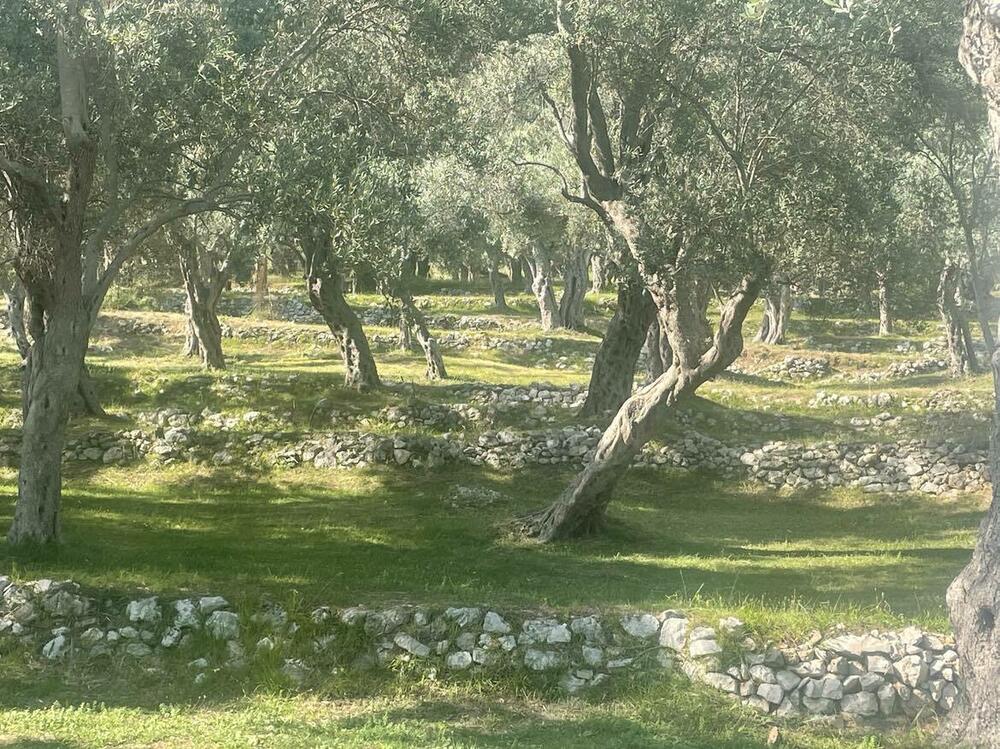
The Secretariat for Spatial Planning and Sustainable Development of the Municipality of Ulcinj issued urban-technical conditions for this complex in January 2023, during the current mandate of the President of the Municipality of Ulcinj Omer Bajraktari, from the Civil Movement URA. In this document, it is stated that all the plots on which they will be built were acquired by purchasing orchards of the second class, undoubtedly olive groves.
And olive growers who want to preserve and additionally valorize the production of olive oil in Valdanos, are against legal construction in that area.
"Olive Village contributes to the development of this area in the direction of a large building plot. The original purpose of this space is being destroyed," one of the owners of the Valdanos olive grove, an olive grower, told CIN-CG. Mirsad (name has been changed for data protection).
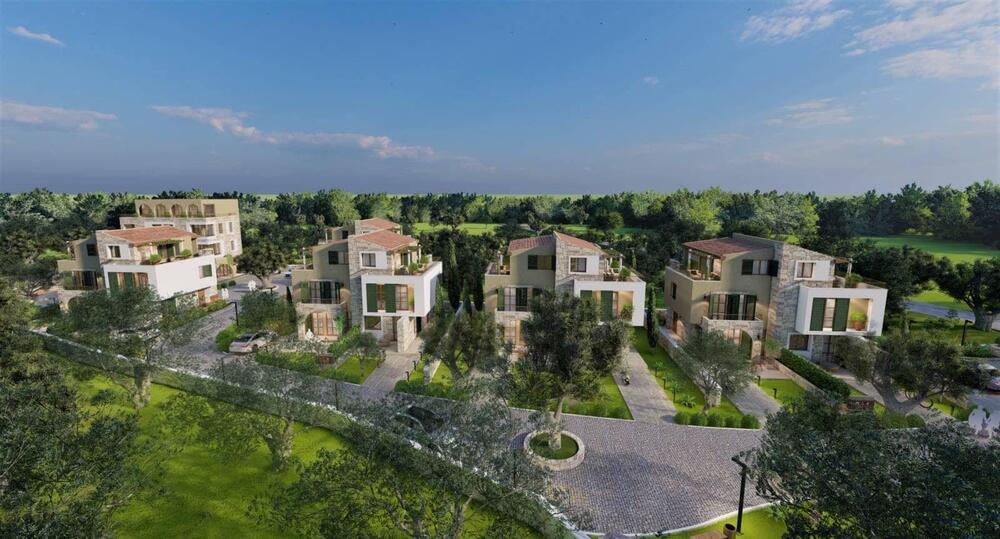
The interlocutors of CIN-CG explain that the precedent for the construction on Valdanos was the hotel "Kuća maslina", which started operating in 2021, and which was built by a well-known entrepreneurial family from Ulcinj. Cungu. Although illegal according to the PUP, because it was built on a plot that was not intended for construction, the building received all the necessary permits. "Olive House" was additionally financed by the Ministry of Agriculture, Forestry and Water Management through IPARD funds.
The authorities do not see illegal construction
Mirsad uses his property exclusively for the production of olive oil, but even his close relatives have built accommodation units for tourists on their plots. "I argue with them about it," he says.
Although according to the Law on Olive Growing of Montenegro, only auxiliary buildings for the needs of olive growing are allowed in olive groves, illegal construction in the form of smaller houses is springing up in Valdanos, which are mainly used as tourist accommodation.
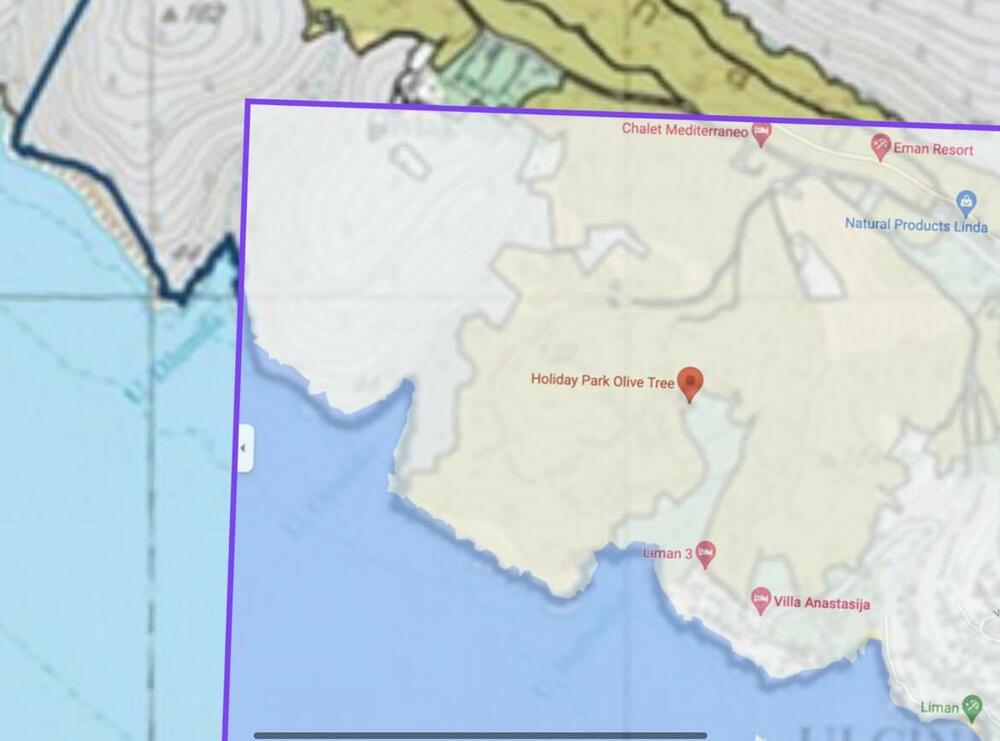
A house in Maslinad is an investment that many residents of Ulcinj are now dreaming of, Mirsad explains. "That trend will persist, unless sanctions are started," he says.
Houses of various dimensions, which are hidden behind the still preserved olive trees, are equipped in the largest number for the stay of tourists. In the courtyards there are deckchairs, umbrellas, swings, slides. Inscriptions like "Olive Cottage", "Four Olives", reveal their touristic nature.
On the Booking site, you can find several buildings that are rented as tourist accommodation in the Valdanosa olive grove. CIN-CG located these objects on the Google map, and then compared it with the map in the PUP Ulcinj, which shows the zone of olive groves, prohibited for construction. Numerous facilities are undoubtedly located in the disputed zone: Eman Resort, Chalet Mediterraneo, Olive Cottage, Four Olives, Olive Groves, Olea Cottage, Mawa, Holiday Park Olive Tree...
However, the Ministry of Ecology, Spatial Planning and Urbanism (MEPPU) claims that "recently, there has been no work being carried out in the Valdanos olive grove".
When asked by the CIN-CG whether and in what ways they control illegal construction in the olive grove, they said that "the urban planning and construction inspection regularly controls the Valdanos olive grove, acting on official duty or considering submitted initiatives."
From MEPPU for CIN-CG they add that the site is under the "watchful eye" of the local authorities of the Municipality of Ulcinj, as well as the NGO MSJA.
However, the Secretariat for Urbanism and Spatial Planning of the Municipality of Ulcinj claims that they are not competent to control illegal construction in Valdanos, because, as they point out, that is the job of the MEPPU.
MSJA states that MEPPU's response shows that they are not doing a good job, and that they should not rely on local NGO organizations as the competent authority. "We are a small organization and we do not have the capacity to carry out constant control of construction in Valdanos," says Zenepa Lika. Due to illegal construction in this area, she sent numerous reports to the urban planning and construction inspection, but as she says, there is no effect, because there are no sanctions against offenders.
That the builders are not afraid of sanctions is confirmed by the numerous buildings that the journalist saw on the ground, many of which are still under construction.
In the last five years, four decisions on the demolition of the Valdanos olive grove were made, MEPPU told CIN-CG. Liki, however, is known to have demolished only one building on the site. However, the owner has restarted construction there, as we saw on the field.
No protection yet
Last year, the Environmental Protection Agency made an expert analysis on the need for preventive protection of "Maslinade Ulcinj with Valdanos Bay", and the Municipality of Ulcinj also made a draft decision on preventive protection. The initiative for preventive protection was submitted to the Agency by the NGOs MSJA and MOGUL from Ulcinj, which have been advocating for years to prevent illegal construction and preserve the olive grove as a natural, cultural and historical asset.
The decision is still awaited, because the Municipality of Ulcinj has not drawn up the Act on temporary protection, which must then be adopted by the competent ministry (MEPPU). The Municipality says that the management conditions have not yet been met, and that the process has taken some time due to "revisions in the study, definition of protection zones and consideration of objections from the public hearing". They point out that the adoption of the act can be expected in the coming weeks.
"The area of 'Maslinada Ulcinj with Valdanos Bay' represents an extremely significant and valuable cultural-historical and natural heritage of the city of Ulcinj and Montenegro, which testifies to the coordinated and balanced interaction between people and nature that has persisted over a long, multi-century period," the expert analysis states. on the need for preventive protection of the Ulcinj olive grove and Valdanos Bay by the Environmental Agency.
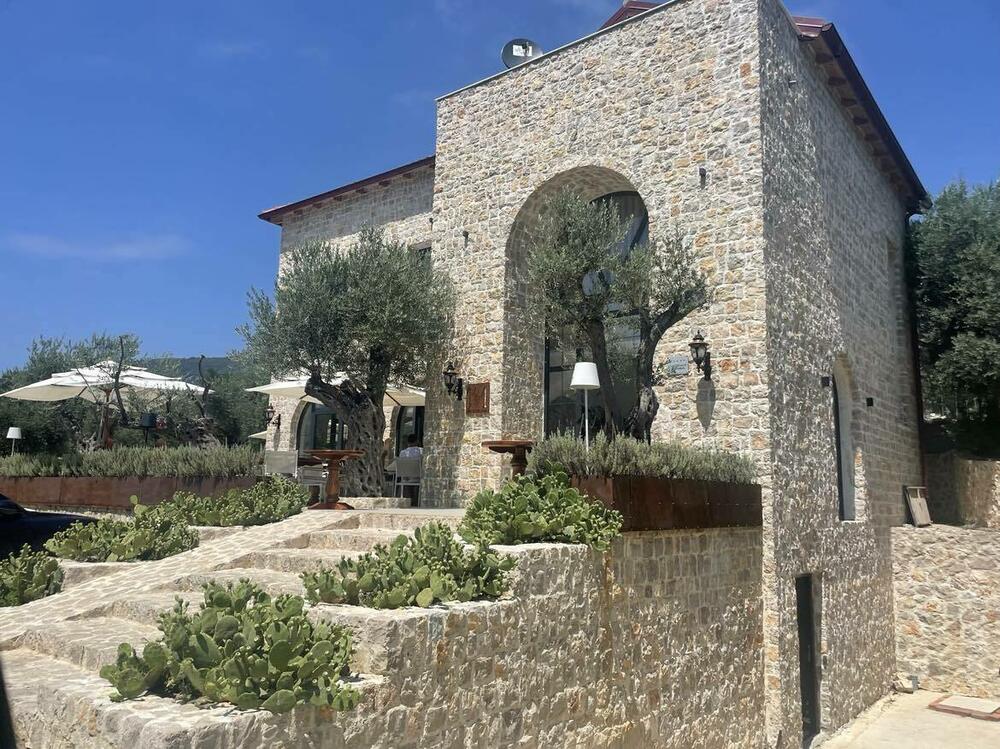
Due to excessive urbanization, there may be a "disruption of the natural ambient harmony of this natural asset and possible loss of its essential values", this analysis warns.
According to the international criteria for the protection of Valdanos, it belongs to the category of land and sea landscape "in which the interaction of people and nature over time has produced an area of special character with significant ecological, biological, cultural and aesthetic value", according to the expert analysis.
The system of preventive protection would explicitly prohibit the "construction of weekend houses, residential and other facilities in the area of olive groves", which is foreseen by the PUP. In addition, preventive protection would also enable a protective belt of the area, where construction and other activities would have to be carried out according to strict criteria.
As Lika explains, the preventive protection system would last for three years. NGO MSJA is already working on a project that would make a quality study of hitherto unexplored aspects of Valdanos during that time.
"It is necessary to thoroughly analyze the natural, cultural and archaeological aspects of this area, which deserves to be part of the UNESCO heritage," explains Lika.
MSJA intends to propose to UNESCO the Ulcinj olive grove with Valdanos Bay for protection. "I hope that the UNESCO status would finally put an end to the devastation," says Lika.
Olive trees are property, not land
In the olive grove, you can see boards with the inscription "private property", stones, symbolically arranged to mark the property, but also barbed wire, and newly built concrete fences, which disrupt the authentic architecture of the dry land.
Part of the Valdanos olive grove was returned to its former owners in 2021 when around 600 families and three religious communities received their property after 40 years.
"The fact that the olive groves were returned to the previous owners should not legally affect the violation of the ban on construction in this area," he told CIN-CG. Ksenija Vukmanović, an architect and spatial planner who worked on changes and additions to the PUP of Ulcinj.
The construction of sports and recreational facilities is planned exclusively in the area of the former military resort, next to one part of the beach, she explains.
However, many are now selling land, as the CIN-CG journalist noted, and the people who buy take it with the idea of building, not farming, according to our interlocutors.
Mirsad, whose ancestors have been engaged in olive growing for centuries, explains that in Valdanos the property was always counted in the number of trees, and never in the square footage of the land. And this testifies that the owners of the olive groves owned only the trees, while the land was a public good and belonged to everyone. "The purpose of this space was olive growing. Nobody ever sold squares before, but trees", Mirsad remembers the tradition that was preserved even during his childhood.
Today, however, only land is sold, not trees. And everyone wants a plot. "It is contrary to the olive grove culture where it was always understood that the land was shared. To get to your olives, you have to pass someone else's. However, now everyone wants to limit their own, so problems arise", he explains.
An unexplored heritage decays
There are a total of 80 olive trees in Valdanos. A 2014 study by the United Nations Industrial Development Organization (UNIDO) states that, based on a sample, the trees in the area range from 300 years old to nearly 2000 years old.
"The very fact that for almost 2000 years the yellow olive has been cultivated continuously is enough for UNESCO protection," explains Lika. She says that the architecture of olive groves in some countries is preserved as a cultural asset, and what was built here 2000 years ago is still used for olive production. "The entire complex of Maslinade is permeated with a characteristic land border and kilometers of cobbled roads, which were built by the inhabitants of Ulcinj over the centuries. There are also many springs and fountains, some of which are made of hewn stone and with catchment", says the architect.
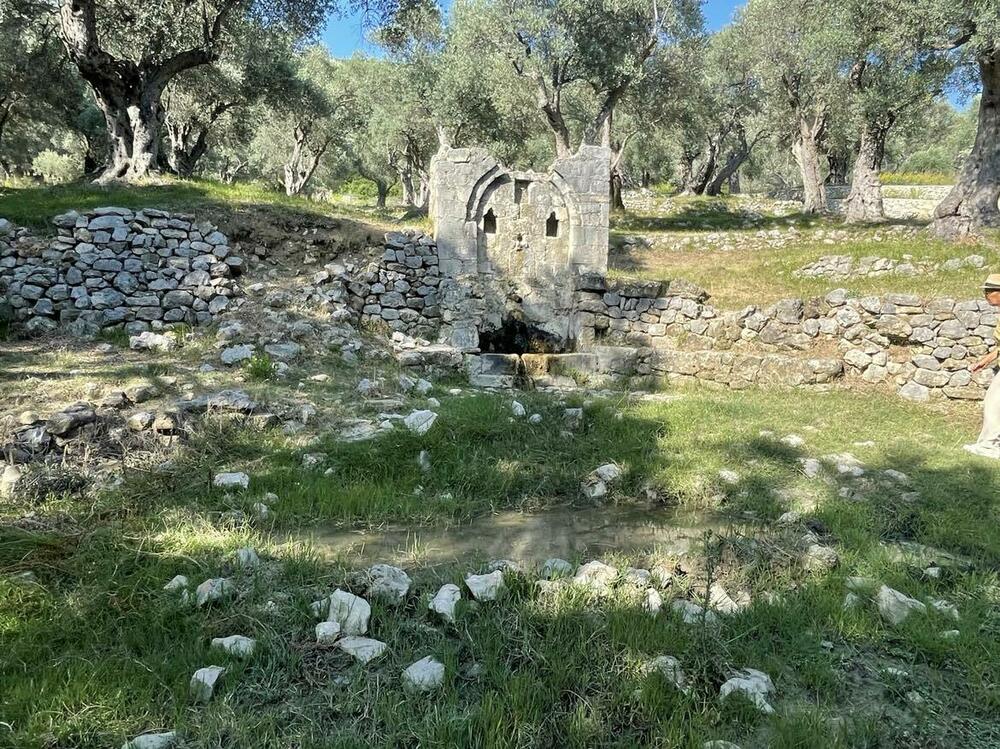
Although neighboring Croatia, along with several other Mediterranean countries, applied for and received the status of UNESCO protection for drywall as an intangible cultural heritage, Montenegro did not do so.
On Valdanos, concrete is already being mixed with the original dry land, as the CIN-CG journalist noted, and the old cobblestones are being demolished to build a plastered driveway for cars.
Vegetation is also destroyed. The meadows are completely bare, on which traces of burning are visible. "Decorative species are also grown, which can have a disastrous effect on olives," explains Mirsad.
"Valdanos is also a treasure trove of underwater archaeological heritage that is linked to the Middle Ages," he explains to CIN-CG Petra Zdravković, an underwater archaeologist from the Administration for the Protection of Cultural Properties of Montenegro.
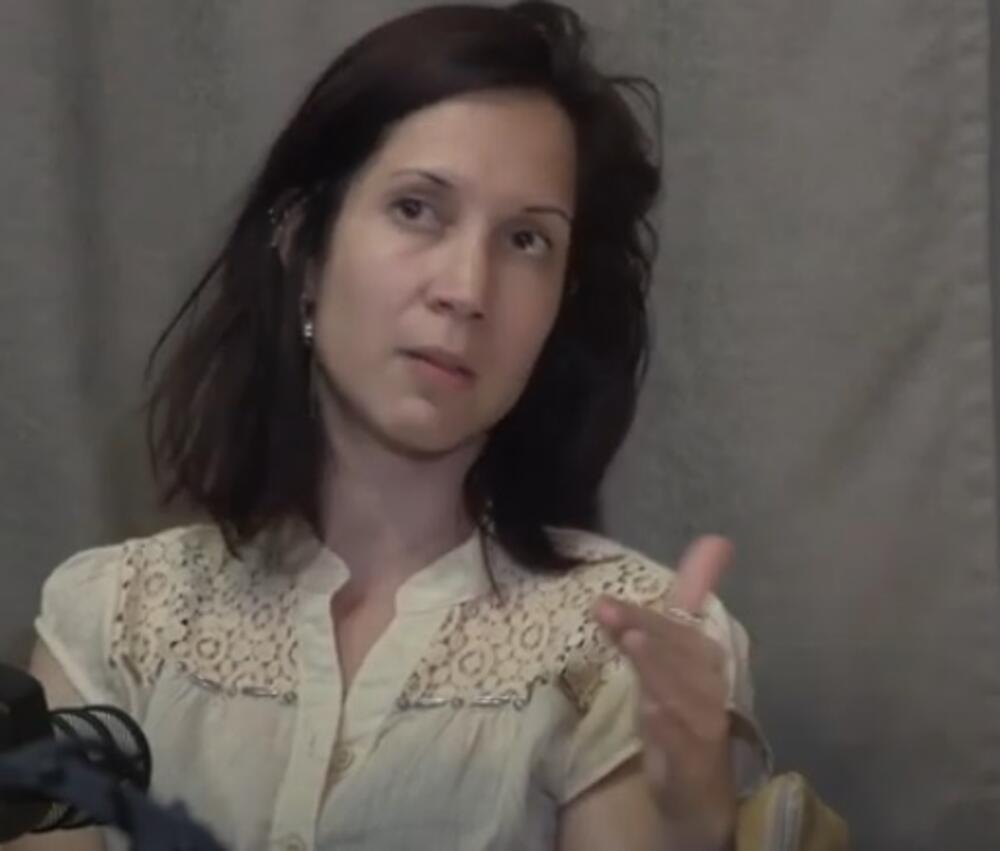
"Montenegro ratified the UNESCO convention on the protection of underwater cultural heritage in 2008, however, given the poor level of underwater archeology in Montenegro, it is not clear whose authority it is to implement this convention," says Petra.
People are known to have recovered and resold jars from the sea on the coast of Valdanos, says Lika.
Valdanos is completely unexplored, and current practices may lead to it being devastated before it is known what treasure we had, CIN-CG interlocutors agree.
During the tour of the olive grove, the CIN-CG journalist met two tourists from Austria, who were looking for the accommodation they had reserved. They were waiting for the owner in front of a stone villa with a large fence, for the construction of which it was evidently necessary to ruin the natural area. When asked by the journalist if they were aware that they had booked accommodation in an area where construction is prohibited, they answered that it was the first time they had heard about it. "I am very disappointed. We found this accommodation through Booking and saw that it was beautiful, but we didn't know that it was illegal," said the tourist from Austria.
The state gave the green light for devastation
The hotel of the Cungu family "Olive House", built in the middle of olive groves, was a precedent that only announced the devastation, which was already written about by Vijesti and warned by MANS.
The bulky villa is located in the heart of a zone that is prohibited for construction by the PUP, but nevertheless received all the necessary permits as an object of public interest for the production of olive oil. The construction was financed on the same basis by the Ministry of Agriculture, Forestry and Water Management (MAFW) with 125 euros from European funds. The decision on financing through the IPARD fund was made in 000 during the Duško Marković government, after the Municipality of Ulcinj declared the House of Olives a project of public interest. Financing of this project was also continued by the governments formed after the elections on August 2020.
During the construction of the House of Olives, trees were also cut down, for which no one was ever held accountable, although fines for cutting and damaging olive trees in olive groves range from 12 to 000 euros. The facility began operating in 15 as a hospitality facility with accommodation and a restaurant instead of as an olive oil producer.
The Ulcinj NGOs MSJA and MOGUL appealed to the harmfulness of the construction and the illegal purpose of the building, but to no avail.
"By financing this project, the Government supported the devastation of the largest living monument for olive cultivation on the Adriatic and opened the door for the long-term repurposing of such a specific and unique area of our country, which has several aspects to be included in UNESCO," concludes Lika.
They do not expect help for olive growing from the state
Olive oil from Valdanos is worth from 100 to 1000 euros per liter, an olive grower and one of the owners of olive groves on Valdanos explains for CIN-CG. This was assessed by professionals who came to Valdanos through the United Nations program, this olive grower explains.
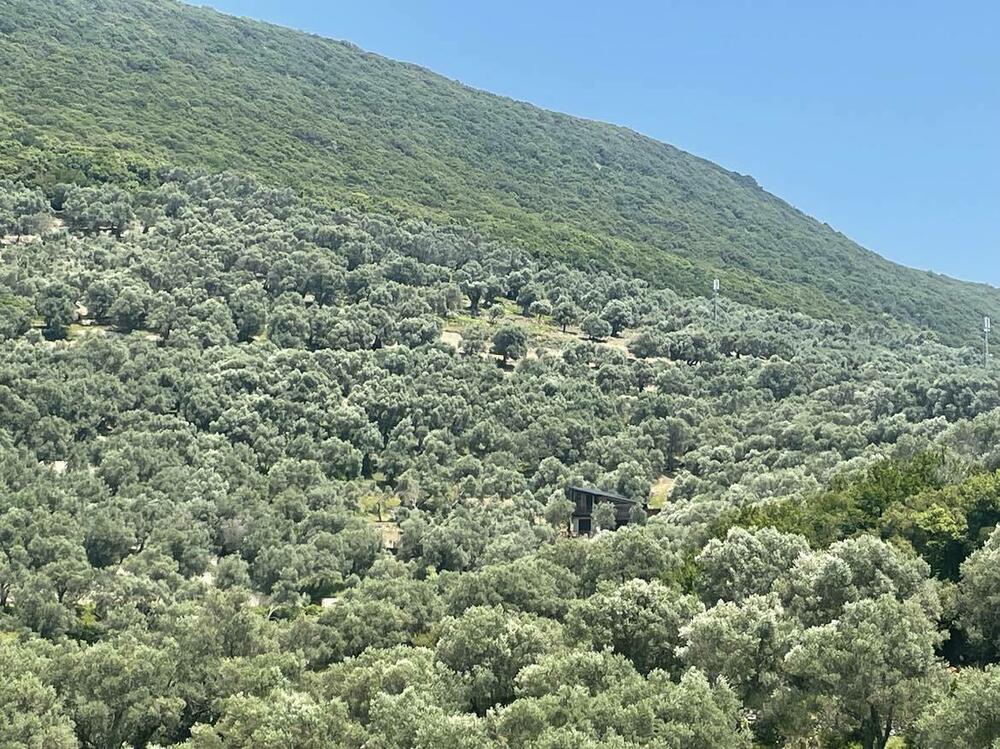
He gained the greatest help and knowledge about production thanks to foreign projects. "They came from Turkey and Italy. You could really learn from them,'' he says.
However, help can hardly be expected from the state of Montenegro. "The support of the Ministry of Internal Affairs and Communications to the 'House of Olives' project, which is not intended for olive growing at all, showed how dedicated the department really is to the development of olive growing," he says.
The fact that olive growing in Montenegro is far below its potential is shown by the data provided in the Expert Analysis on the need for preventive protection of the location of the "Ulcinj Olive Farm with Valdanos Bay". "Just by introducing at least half of the existing olive groves into intensive production, the volume of production would increase by over 50 percent. In this sense, the main priority should be to increase the yield per bearing tree from today's five kilograms to at least 15-20 kilograms, although the real bearing potential is 30-35 kilograms per tree,'' this analysis states.
This analysis envisages the opening of the Center for the Development of Olive Cultivation in Valdanos, which would support the traditional cultivation of olives and the sale of olive oil.
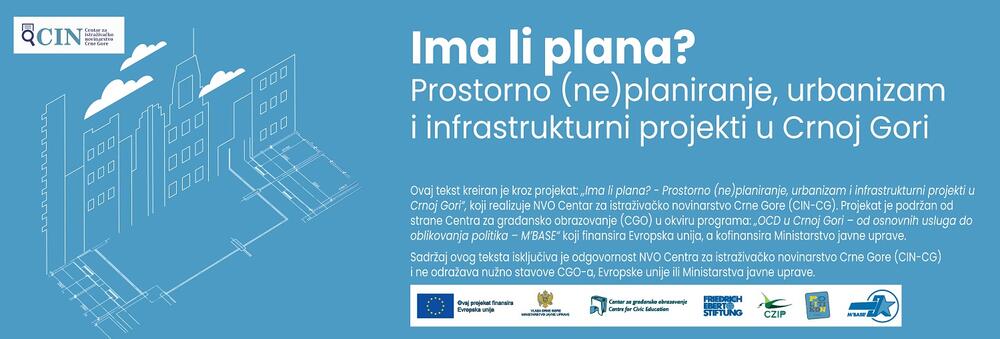
Bonus video:



